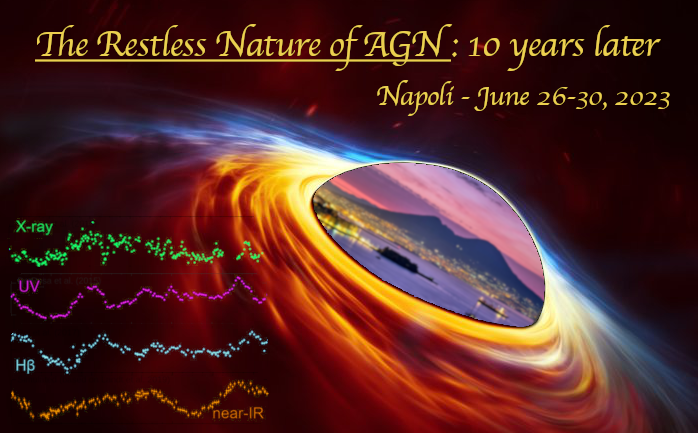Speaker
Description
I will show the results of the study of variability for a sample of more than 300 FSRQ in gamma-ray, focusing on waiting time between flares (L. Pacciani, A&A, 2022, 658, 164), and on flares luminosity and duration.
The investigation of waiting times revealed that gamma-ray activity can be modeled with overlapping bursts of flares, with flares uniformly distribuited within each burst, and bursts uniformly distribuited with a typical rate of 0.6/y.
Morerover, a statistically relevant fast component with timescale of order of days is revealed.
From this result, constraints on flares emission mechanisms were derived.
Timescales derived for FSRQ variability is very similar to the findings of Ivezic & MacLeod 2013, and of Burke 2021 for the damping timescale found in optical for SMBH of 10^8-10^9 solar masses.
Moreover, Kelly et al. (2009) aobserved that radio-loud quasars show an excess optical variability for timescales below 1 d, with a white noise PSD.
These similarities suggest a common origin for such a variability.

